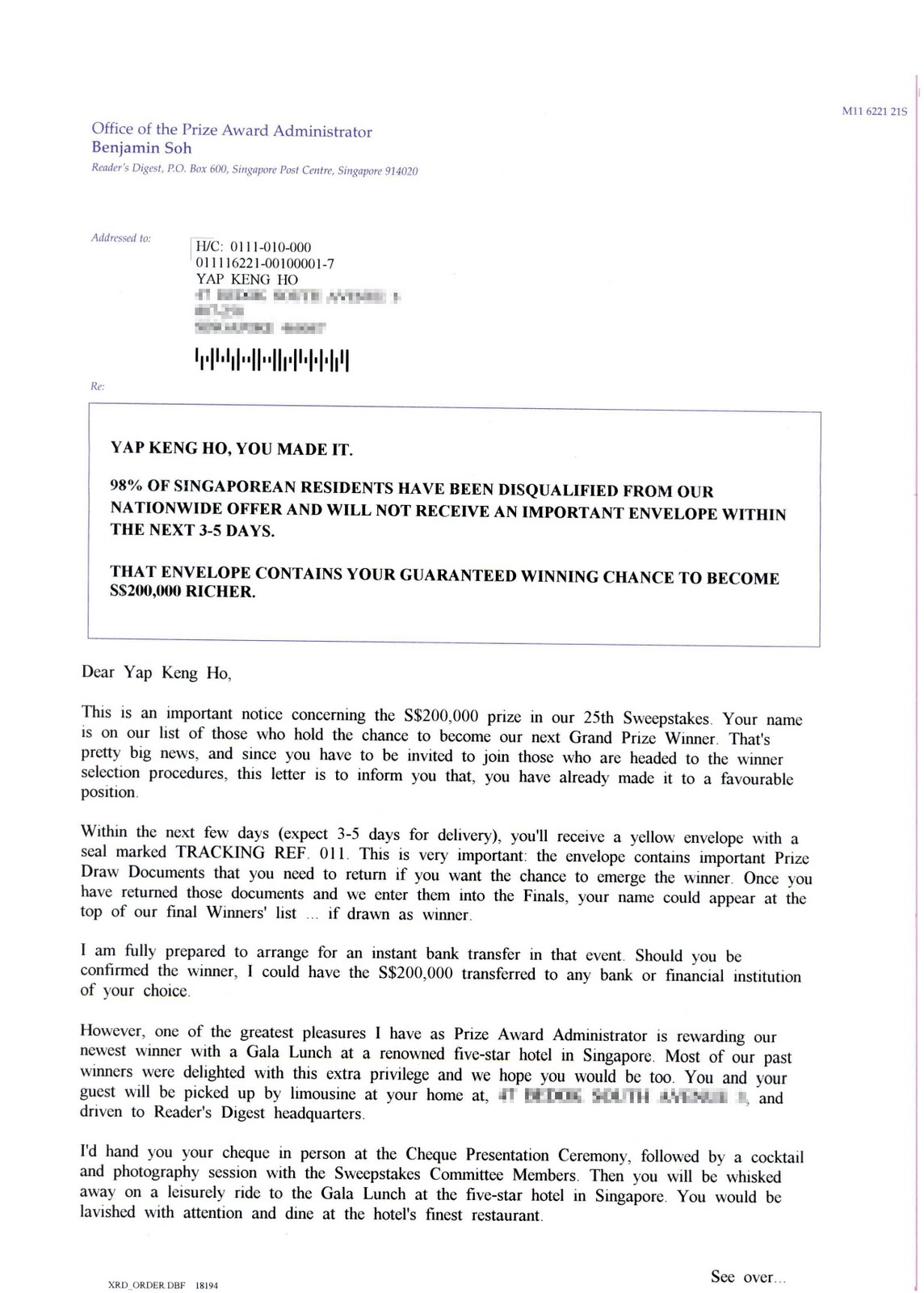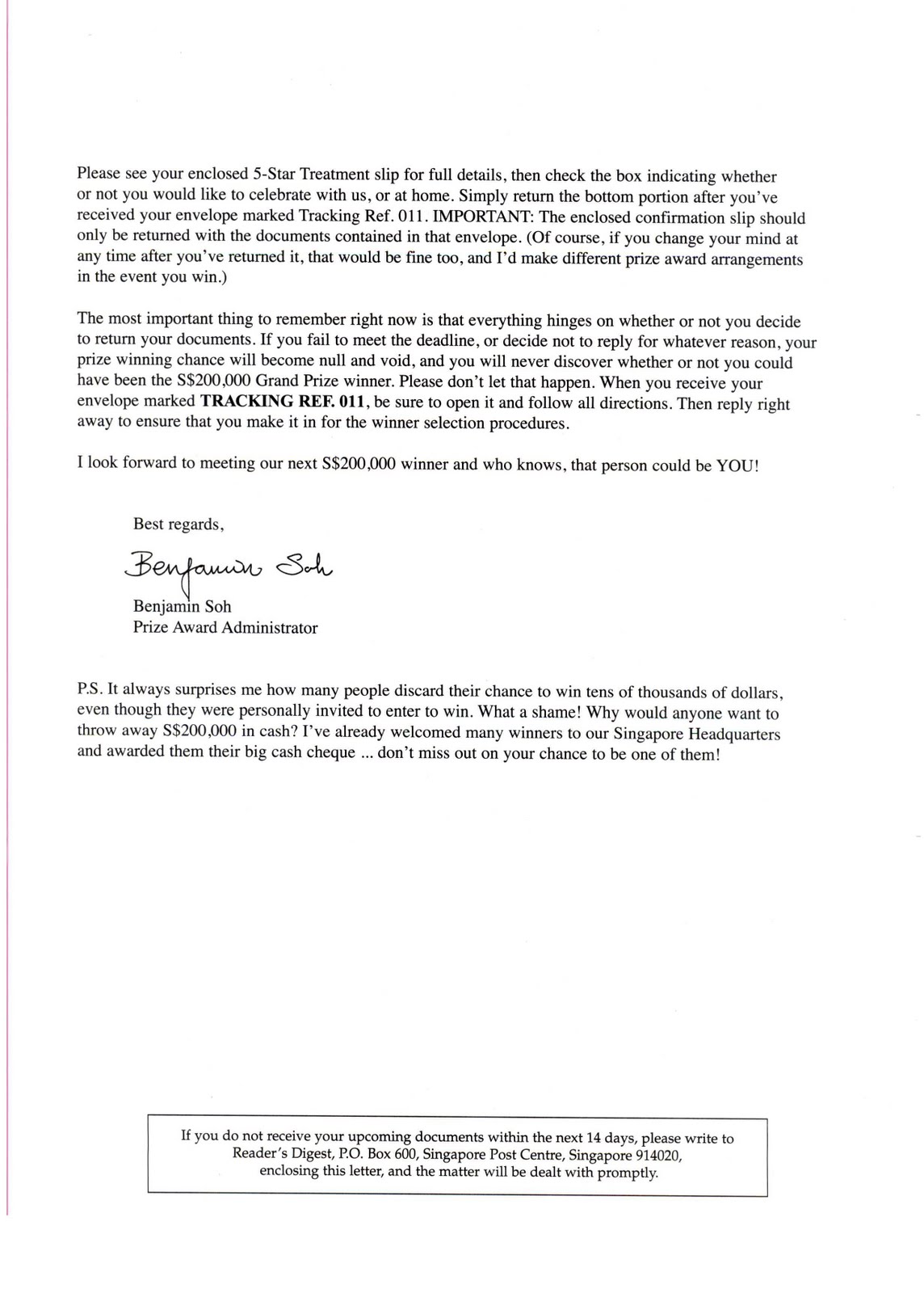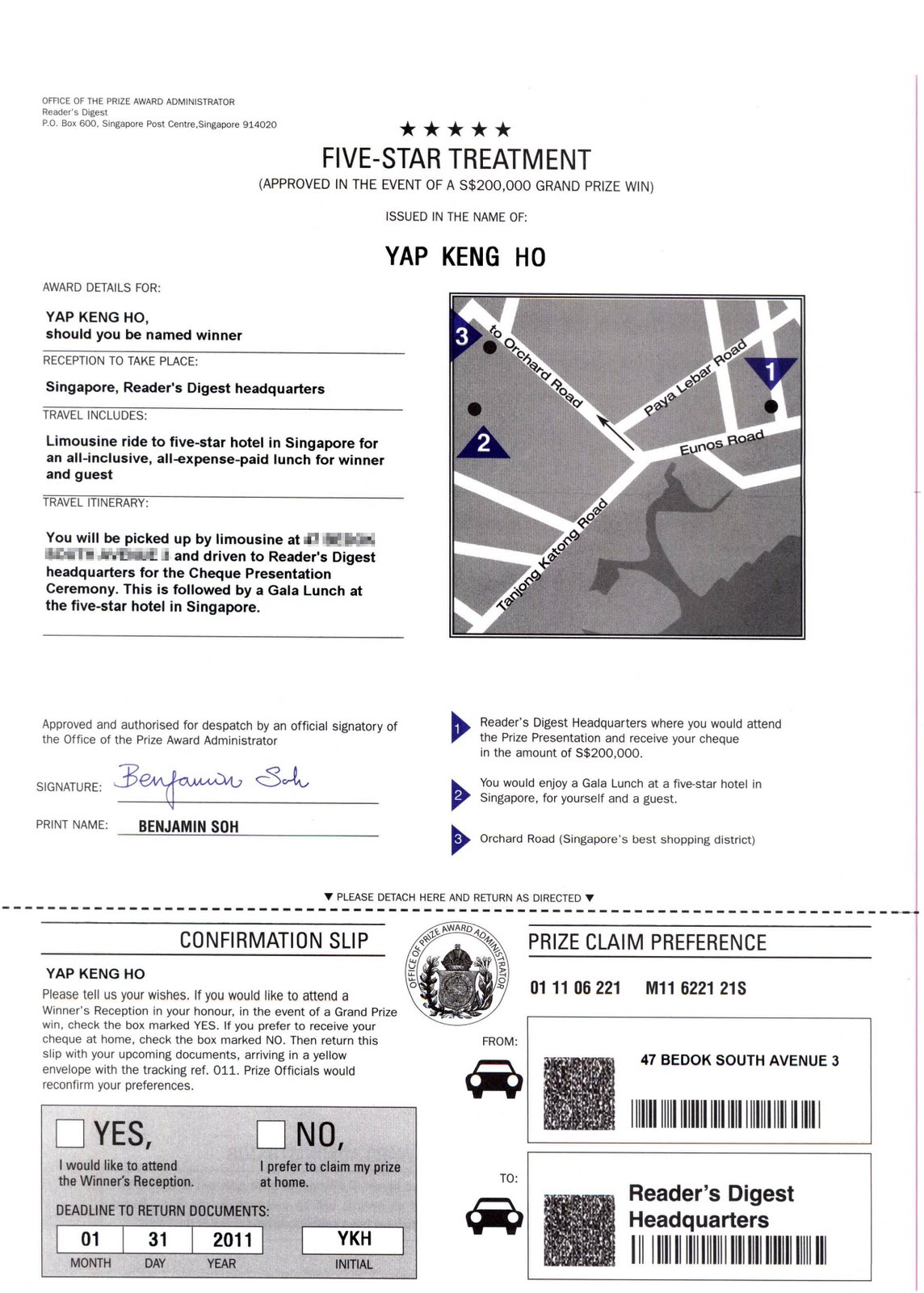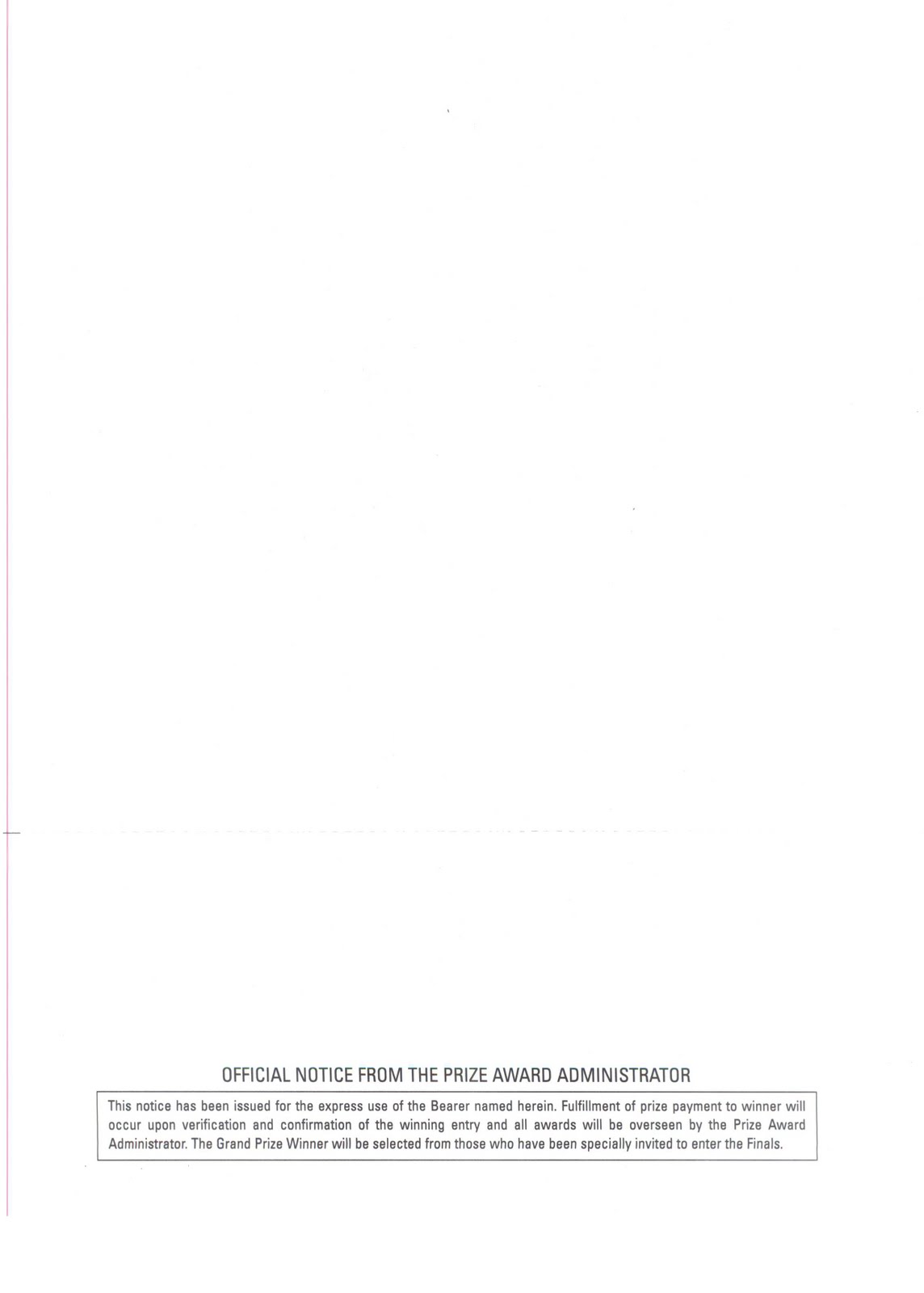in chinese, it is call put long line, catch big fish.
But.. it is sad that there are some people who are con by this.
Some of these people are old people who have dementia. They are helpless against this type of con.
They are so notorious. There is already charges in the USA court and the US AG had let them off. :oIo: Read the wiki:
http://en.wikipedia.org/wiki/Reader's_Digest
Business organization and ownership
The magazine's parent company,
The Reader's Digest Association, Inc. (RDA), became a publicly traded corporation in 1990. As of 2010<sup class="plainlinks noprint asof-tag update" style="display: none;">
[update]</sup> RDA has reported a net loss each year since 2005<sup class="Template-Fact" title="This claim needs references to reliable sources from February 2010" style="white-space: nowrap;">[
citation needed]</sup>. In March 2007,
Ripplewood Holdings LLC led a consortium of
private equity investors who bought the company through a leveraged buy-out for US$2.8 billion, financed primarily by the issuance of US$2.2 billion of debt.<sup id="cite_ref-NYT-Segal-2009-12-20_1-2" class="reference">
[2]</sup><sup id="cite_ref-NYT-Segal-2009-12-20_1-3" class="reference">
[2]</sup><sup id="cite_ref-NYT-18Jun09_8-1" class="reference">
[9]</sup> Ripplewood invested $275 million of its own money, and had partners including Rothschild Bank of Zurich and GoldenTree Asset Management of New York. The private equity deal tripled the association's interest payments, to $148 million a year.<sup id="cite_ref-NYT-Segal-2009-12-20_1-4" class="reference">
[2]</sup>
On 24 August 2009 RDA announced it had filed with the U.S. Bankruptcy court a pre-arranged
Chapter 11 bankruptcy, in order to continue operations, and to restructure the $2.2 billion debt undertaken by the leveraged buy-out transaction.<sup id="cite_ref-NYT-Segal-2009-12-20_1-5" class="reference">
[2]</sup><sup id="cite_ref-9" class="reference">
[10]</sup><sup id="cite_ref-NYT-dealbook-2009-08-17_10-0" class="reference">
[11]</sup> The company emerged from bankruptcy with the lenders exchanging debt for equity, and Ripplewood's entire equity investment was extinguished.<sup id="cite_ref-NYT-Segal-2009-12-20_1-6" class="reference">
[2]</sup>
In April 2010, the UK arm was
sold to its management. It has a licensing deal with the US company to continue publishing the UK edition.<sup id="cite_ref-11" class="reference">
[12]</sup>
In the US the company cut the number of issues it published a year from 12 to 10 last year. It also cut its circulation guarantee for advertisers to 5.5 million copies from 8 million.
[edit] Sweepstakes agreement
In 2001, 32 states attorneys general reached agreements with the company and other sweepstakes operators to settle allegations that they tricked the elderly into buying products because they were a "guaranteed winner" of a lottery. The settlement required the companies to expand the type size of notices in the packaging that no purchase is necessary to play the sweepstakes, and to:
- Establish a "Do Not Contact List" and refrain from soliciting any future "high-activity" customers unless and until Reader's Digest actually makes contact with that customer and determines that the customer is not buying because he or she thinks that the purchase will improve his or her chances of winning.
- Send letters to individuals who spend more than $1,000 in a six-month period telling them that they are not required to make purchases to win the sweepstakes, that making a purchase will not improve their chances of winning and that, in fact, all entries have the same chance to win whether or not the entry is accompanied by a purchase.<sup id="cite_ref-12" class="reference">[13]</sup><sup id="cite_ref-13" class="reference">[14]</sup><sup id="cite_ref-14" class="reference">[15]</sup>
The agreement appeared to adversely affect Reader's Digest circulation in the U.S.<sup class="noprint Inline-Template" title="The text in the vicinity of this tag needs clarification or removal of jargon from September 2010" style="white-space: nowrap;">[
clarification needed]</sup> Its 1970s peak circulation was 17 million U.S. subscribers.<sup id="cite_ref-NYT-Segal-2009-12-20_1-7" class="reference">
[2]</sup>












